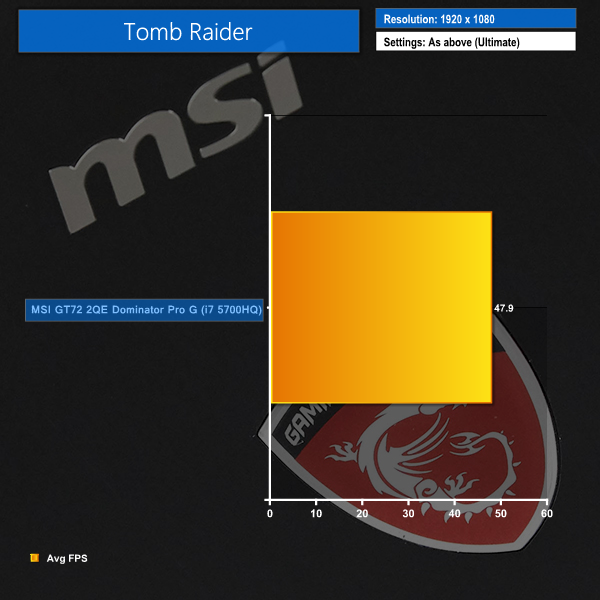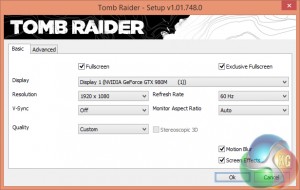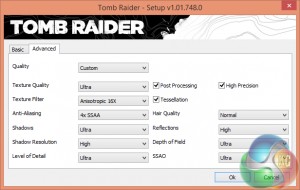Bioshock Infinite
We used the Bioshock Infinite demanding ‘Ultra’ setting and a 1920 x 1080 resolution to push today’s gaming hardware. Our data was recorded using a section of the game, not the built-in benchmark.
Metro: Last Light
We used a 1920 x 1080 resolution and the Metro: Last Light built-in benchmark set to ‘High’ quality to offer an intense challenge for the gaming hardware while also making playable frame rates a possibility.
Tomb Raider
We used a 1920 x 1080 resolution and the Tomb Raider built-in benchmark set to ‘Custom’ quality.

We tested the system using G-Sync which, while not fully representative of the GPU's raw horsepower (due to frame rates being linked with the display refresh rate of 75Hz), is an accurate representation of the performance that a gamer will observe. Users wanting higher average frame rates can change the behaviour of the screen synchronisation beyond the panel's native refresh rate – either V-Sync off or V-Sync on can be selected when the G-Sync operating range is surpassed.
MSI's GT72 2QE Dominator Pro G shows solid performance in games. There is enough horsepower under the laptop's hood to run popular AAA titles at close-to-maximum, or maximum, image quality settings and a playable frame rate on the 1920×1080 panel. Our Metro: Last Light and Bioshock Infinite tests actually see the system pushing frame rates towards the screen's 75Hz refresh rate.
G-Sync adds another dimension to the gaming experience by making lower frame rates less of an eye sore. An average frame rate of almost 48FPS in Tomb Raider would typical call for an image quality reduction. G-Sync, however, makes the lower average frame rate far more bearable.
Using V-Sync in this occasion would produce noticeable stutter that would present an unpleasant experience.
 KitGuru KitGuru.net – Tech News | Hardware News | Hardware Reviews | IOS | Mobile | Gaming | Graphics Cards
KitGuru KitGuru.net – Tech News | Hardware News | Hardware Reviews | IOS | Mobile | Gaming | Graphics Cards









Whoa, why do I not remember Gsync for laptops being announced.
->>>
>